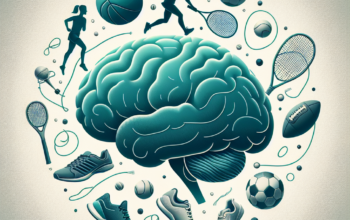Introduction
In recent years, the convergence of technology and sports has revolutionized how athletes train, compete, and engage with fans. As we delve into 2025, the trends shaping the future of sports technology are not just enhancing performance and player safety but also transforming the fan experience and redefining athletic standards. From advanced analytics and wearable tech to immersive virtual reality experiences and artificial intelligence-driven coaching, these innovations are driving the sports industry forward like never before.
Wearable Technology: The Evolution of Athletic Performance
The realm of wearable technology is one of the most significant trends shaping the future of sports technology in 2025. Devices such as smartwatches, fitness trackers, and specialized performance monitors are ubiquitous in athletic training regimens. These wearables are equipped with sensors that measure heart rate, sleep quality, hydration levels, and even biomechanics. As athletes become increasingly data-driven, they rely on this information to enhance performance, prevent injuries, and optimize recovery strategies.
One of the most exciting advancements in wearable technology is the integration of real-time data analysis. Coaches and trainers now have access to software platforms that interpret complex datasets from wearables, allowing them to make actionable insights almost instantaneously. This capability not only allows for personalized training programs but also enables quick adjustments during gameplay, ensuring athletes are always performing at their peak. As this technology continues to evolve, the integration of artificial intelligence will likely provide predictive analytics, helping to forecast injuries before they occur and streamline recovery processes.
Artificial Intelligence and Machine Learning in Sports
Artificial intelligence (AI) and machine learning are fundamentally changing sports analytics and decision-making processes. In 2025, teams across various leagues are leveraging AI to enhance everything from game strategy to player recruitment. By analyzing vast amounts of data, including player statistics, game footage, and historical performance metrics, AI systems are capable of recognizing patterns that human analysts might miss. This results in more informed decisions regarding player trades, draft picks, and in-game strategies.
Moreover, AI-driven coaching tools are on the rise, offering customized feedback to athletes based on their unique styles, strengths, and weaknesses. These tools can analyze play classic footage and simulate potential future moves, allowing athletes to prepare for a range of possibilities they may encounter during competition. The collaboration between athletes and AI is generating enormous potential for improvement, presenting a future where every player can enhance their game through tailored insights, thereby raising the overall level of competition.
Virtual Reality: The New Frontier in Sports Training and Fan Engagement
Virtual reality (VR) has emerged as a powerful tool reshaping how athletes train and fans engage with their favorite sports. In 2025, teams and organizations are adopting VR for immersive training experiences that allow athletes to simulate real-game scenarios without physical tolls. By immersing athletes in virtual environments, they can practice their skills, improve decision-making, and master plays without the risk of injury. This not only revolutionizes training efficiency but also helps players mentally prepare for high-pressure situations.
In addition to training, VR is transforming fan experiences by delivering more interactive and immersive environments. Imagine attending a game where fans can don VR headsets that transport them right onto the sidelines or into the action. This technology enhances viewership by allowing fans to experience games from diverse angles and perspectives, fostering a deeper connection with the sport. As teams develop VR fan experiences further, the potential for conducting virtual meet-and-greets with athletes or offering unique behind-the-scenes glimpses becomes increasingly feasible, broadening the scope of what sports entertainment can entail.
Blockchain Technology: Revolutionizing Sports Ownership and Transactions
Blockchain technology is poised to disrupt the sports industry in various ways, particularly concerning ownership and transactions. By providing a decentralized ledger to document ownership and transaction history, blockchain enhances transparency and security around ticket sales, memorabilia authentications, and even player transactions. As fan engagement on digital platforms grows, the use of blockchain for creating limited-edition digital collectibles and NFTs (non-fungible tokens) has surged, allowing fans to own a piece of their favorite teams and moments in history.
Additionally, blockchain technology offers a platform for more straightforward and fraud-resistant financial transactions. Traditional payment methods often include additional fees and risks associated with chargebacks; however, blockchain can streamline this process considerably. In 2025, stadiums will likely adopt blockchain systems for ticketing, verified payments, and even loyalty programs. This reduced friction ultimately leads to a better fan experience, where purchasing processes become smoother and more secure, fostering greater trust in sports organizations and their practices.
Data Analytics: The Science Behind Sports Performance and Fan Insights
Data analytics has taken a forefront role in enhancing sports performance and engaging fans. As we navigate 2025, the ability to gather, analyze, and apply data is critical in determining the success of teams and athletes. Teams now employ sophisticated data systems that consolidate performance metrics, training regimens, and health data, leading to more informed decisions in coaching strategies. This level of analysis enables coaching staff to fine-tune training programs based on individual athlete feedback and collective team performance.
Moreover, data analytics is also integral in enhancing fan engagement by providing personalized experiences. Teams and sports organizations employ data-driven strategies to add value to fan interactions, tailoring content based on behavior, preferences, and feedback. For instance, through predictive analytics, organizations can develop targeted marketing strategies that optimize ticket sales, merchandise offerings, and fan interactions. As data analytics evolves further, it will continue providing teams and fans with richer, more personalized experiences, enhancing the overall culture surrounding sports.
Conclusion
As we look toward the future of sports technology in 2025, it is evident that innovations are reshaping every aspect of the athletic experience, from the way athletes train, prepare, and compete, to how fans engage with their favorite sports. The integration of wearable technology, artificial intelligence, virtual reality, blockchain, and data analytics offers transformative opportunities that redefine athletic performance and engagement. Sports organizations must remain adaptable and open to these advancements to foster growth, elevate competition levels, and deliver experiences that resonate with fans in this ever-evolving landscape.
FAQs about Trends Shaping the Future of Sports Technology
What are the main technologies impacting sports in 2025?
In 2025, key technologies influencing sports include wearable technology, artificial intelligence, virtual reality, blockchain, and advanced data analytics. These innovations are designed to optimize player performance, enhance fan engagement, and streamline operations within sports organizations.
How does wearable technology benefit athletes?
Wearable technology helps athletes track their performance, monitor vital signs, assess biomechanics, and enhance recovery strategies. This data-driven approach allows athletes to make informed training decisions and reduces the risk of injury.
What role does AI play in sports analytics?
AI revolutionizes sports analytics by processing vast amounts of data to identify trends and insights that guide coaching strategies, player drafts, and in-game decisions. AI tools also provide personalized feedback to athletes, improving their overall performance.
How is blockchain technology used in sports?
Blockchain technology is used in sports for secure transactions, transparent ticket sales, authentication of memorabilia, and the creation of digital collectibles (NFTs). It enhances fan engagement and establishes trust in transactions.
What advantages does virtual reality offer for athlete training and fan engagement?
Virtual reality provides athletes with immersive training experiences that simulate game situations without physical risks, improving preparation and decision-making. For fans, VR enhances viewing experiences, offering interactive engagement and unique perspectives during live games.












